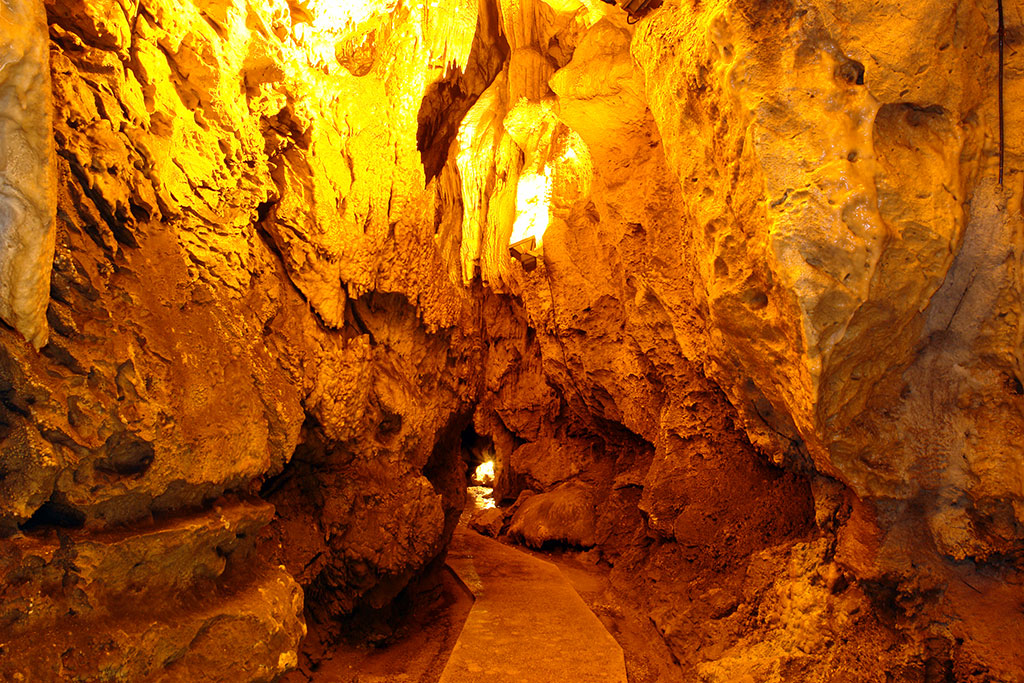Zindan Cave: Nature’s Marvel in Isparta
Nestled in the charming Aksu district of Isparta, Zindan Cave is emerging as a treasure for those eager to explore natural beauty intertwined with history. Opened to the public just 23 years ago, this cave offers an enchanting mix of geological wonders, archaeological significance, and captivating folklore, all framed by scenic underground waters and stunning rock formations.
Brama do przygody
Situated approximately 30 km southeast of Eğirdir and about 1 km north of Aksu, Zindan Cave stretches for a kilometer and is easily accessible via an ancient Roman bridge. Visitors are invited to embark on an underground adventure featuring remarkable sights such as Byzantine ruins, impressive stalactites, stalagmites, and the ‘hamam’ room—an ancient space believed to have been used for ritualistic bathing. Moreover, it’s a popular destination for cycling enthusiasts who appreciate both the thrill and the historical context.
Historical Significance
Perched at an elevation of 1,300 meters (4,265 feet), Zindan Cave dives deep into the limestone landscape, extending 765 meters into the hills. At its entrance, historical landmarks abound: the Roman bridge, the remnants of the Eurymedon Temple, and a vibrant mosaic representing the river goddess. These treasures highlight the cave’s long-held religious and cultural relevance to ancient pagan, Greek, and Roman civilizations.
Inside, the cave showcases a fascinating environment sculpted by mineral deposits over millennia. Stalactites and stalagmites rise dramatically, creating a sculptural atmosphere, while a subterranean stream flows, echoing within the cavern. This naturally mineral-rich water has been tested and found to contain significant levels of calcium and magnesium, aligning with local beliefs regarding its skin-nourishing properties.
Nature’s Symbolism and Cultural Heritage
The renowned Eurymedon mosaic, crafted from a blend of black, white, and red stones, represents one of the cave’s most iconic features, further emphasizing its ancient spiritual significance. Near the entrance, this mosaic hosts a wealth of engravings and ruins resembling an open-air museum amidst a stunning natural landscape. Additionally, deeper within lies a space interpreted by archaeologists as a former ritual bath, directly connected to an ancient spring. The perceived therapeutic virtues of the water are heightened by its rich mineral content.
An Attraction for Modern Times
Currently, Zindan Cave welcomes around 50,000 visitors each year. Enhancements made during its transformation into a tourism hotspot—like well-lit walkways and added safety measures—ensure accessibility while maintaining its inherent natural and historical essence. The cave’s internal temperature is a consistent 5°C (41°F), providing an inviting respite from the Mediterranean heat during the summer months.
Future Implications for Tourism
The appeal of Zindan Cave as a blend of natural beauty and archaeological heritage positions it as a vital element in Turkey’s tourism landscape. As one of the country’s fascinating underground treasures, it potentially inspires greater interest in other natural wonders and historical sites across the region. Insights gained from exploring such unique sites could be influential in developing tourism strategies that focus on the rich tapestry of Turkey’s ancient and modern allure.
In summary, Zindan Cave stands as a captivating intersection of adventure and cultural exploration. It showcases Turkey’s remarkable heritage and potential for thriving tourism. For those drawn to marine destinations or seeking diverse experiences, GetBoat.com provides an exceptional platform for renting sailboats and yachts, complementing a journey through Turkey’s mesmerizing landscapes.


